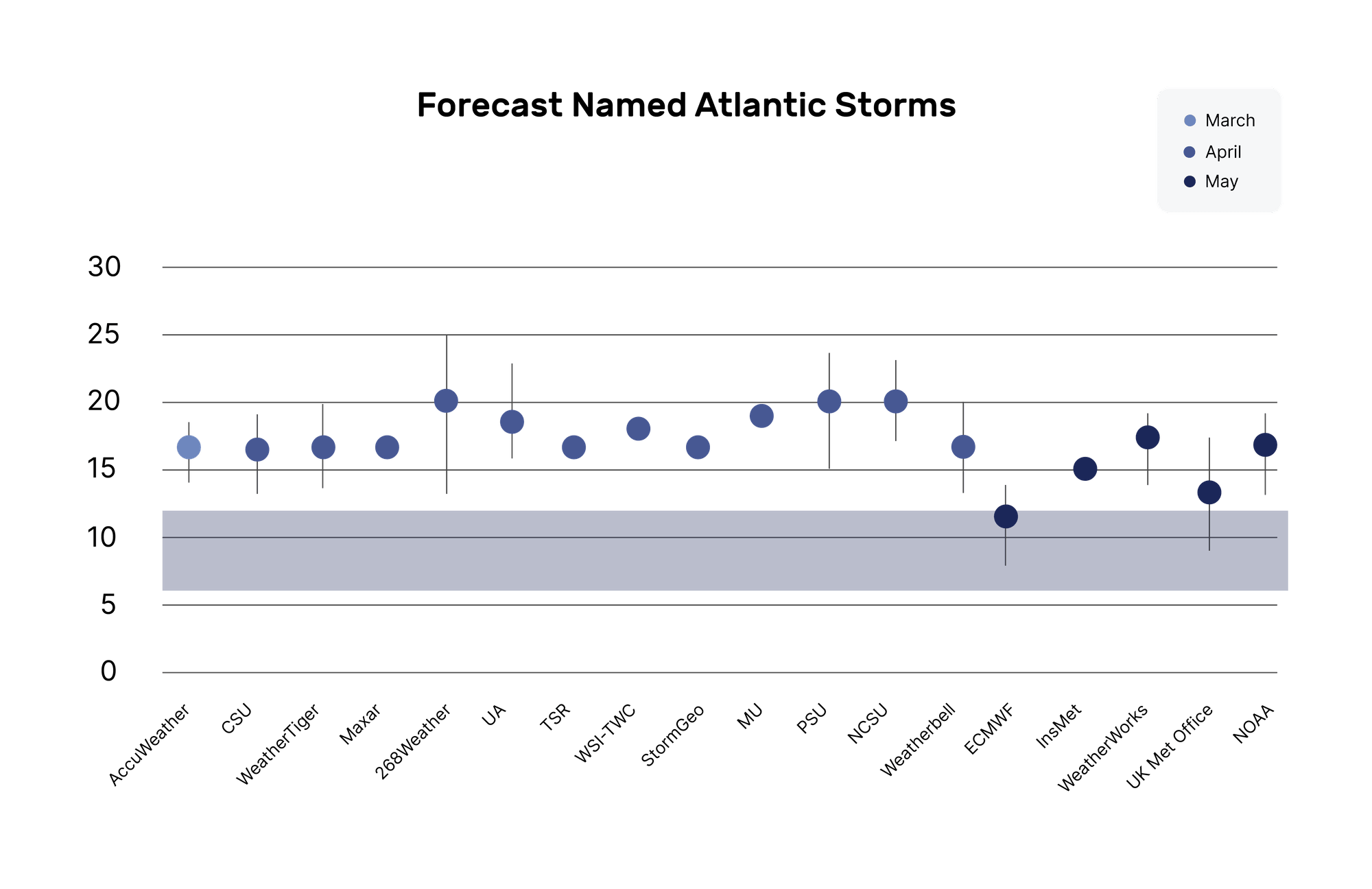Since time doesn’t seem to have any meaning right now, it may actually be a surprise that the 2020 Atlantic hurricane doesn’t start for another few days. Which means it’s that time of year when some corners obsessively debate the various hurricane pre-season forecasts.
Let’s start with some basic tenets:
1) Hurricane activity is partly influenced by the Earth’s climate.
· If the Atlantic is warmer than average (which may, or may not, be related to a climate oscillation - the Atlantic Multidecadal Oscillation), then there’s more energy for hurricanes to draw upon.
· If there’s an El Nino phase of ENSO (warm Pacific equatorial SSTs), then hurricane activity is suppressed as there is more wind shear over the Atlantic. If ENSO is Neutral or La Nina then the brakes on hurricane activity seem to come off.
· There are moderate correlations with climate events such whether the west African monsoon was increased.
· Other climate variables such as the North Atlantic Oscillation (NAO) and the Quasi-Biennial Oscillation (QBO) influence where hurricanes form and where they go.
2) Hurricane activity is ONLY partly influenced by the Earth’s climate.
· If there were perfect correlations and the data were perfect, climate effects would only account for about half of the observed variation in hurricane activity.
· Half of the variation in hurricane activity is just random so active years happen when the climate is running against storms forming or in years predicted to be active not much happens.
So, what are the various seasonal forecasts saying right now? The chart below shows the forecasts of the number of named storms issued by a stack of different organizations (governmental, academic, and private) over the last few months. The most recent forecasts are shown to the right of the chart, in darker colors. Long story short – most every forecast is predicting an above average season.

What’s driving these forecasts? Two main things:
1) Atlantic Sea Surface Temperatures (both in the main basin and in the Gulf of Mexico) are warmer than average.
2) The forecasts of ENSO are showing that either a Neutral phase will persist over the summer, or a La Nina phase will develop later in the season.
How solid are these findings? Well, the Atlantic is generally warmer than average but that’s been true for most of the last 20 years so that really doesn’t make 2020 any different than last year. ENSO is in a Neutral phase right now and, while the models of ENSO generally struggle during the Spring, there is a consensus that Neutral will continue.
Is an Above Average forecast reasonable? Given the data, probably.
Is the forecast reliable? To misquote Anchorman: 50% of the time, it works every time. So, maybe so, maybe not.
One thing is certain: an active season is generally a Bad Thing but, against the backdrop of COVID-19 and all that that implies, in 2020 it could be a Very Bad Thing Indeed.


